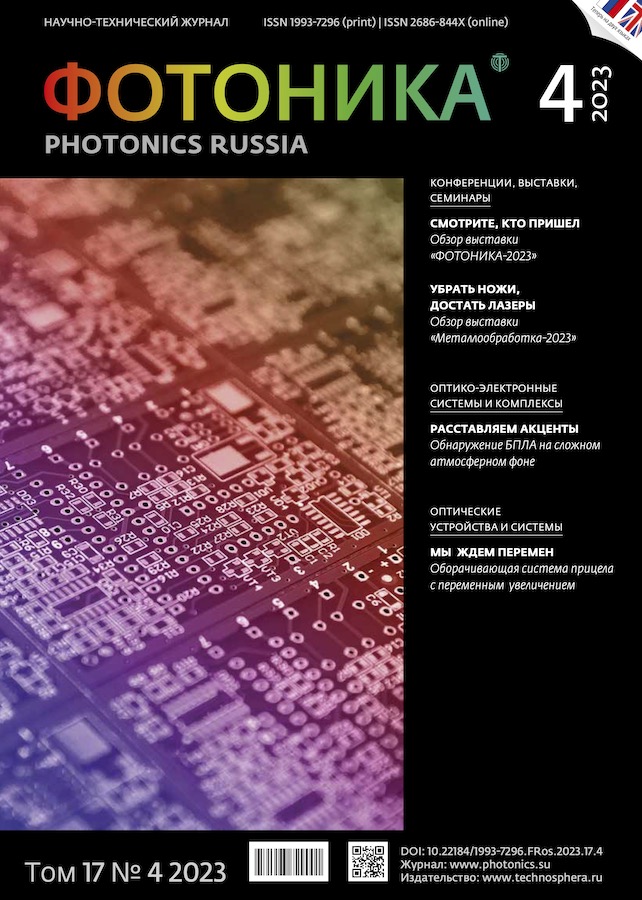Аппаратно-программный комплекс для исследования мелкомасштабных вариаций парниковых газов
- Авторы: Долгих Г.И.1, Бовсун М.А.1, Долгих С.Г.1, Чупин В.А.1, Яцук А.В.1
-
Учреждения:
- Тихоокеанский океанологический институт им. В. И. Ильичёва Дальневосточного отделения Российской академии наук
- Выпуск: Том 17, № 4 (2023)
- Страницы: 294-307
- Раздел: Оптические измерения
- URL: https://journals.eco-vector.com/1993-7296/article/view/627262
- DOI: https://doi.org/10.22184/1993-7296.FRos.2023.17.4.294.306
- ID: 627262
Цитировать
Полный текст
Аннотация
Для изучения природы вариаций парниковых газов создан аппаратно-программный комплекс, состоящий из 52,5-метрового лазерного деформографа, 17,5-метрового лазерного деформографа, лазерного нанобарографа и мобильной лаборатории НИС «Профессор Гагаринский», состоящей из атмохимического измерительного комплекса (газоанализатор Picarro), комплекса метеорологических приборов на верхней палубе мостика, судовой газоаналитической лаборатории и проточной судовой системы. При обработке экспериментальных данных по вариациям деформаций верхнего слоя земной коры и вариациям атмосферного давления на м. Шульца, а также при анализе вариаций метана, углекислого газа и паров воды в приводной атмосфере на шельфе Японского моря на удалении около 2 км от м. Шульца установлены общие закономерности в поведении изучаемых параметров верхнего слоя земной коры и приводного слоя атмосферы в инфрагравитационном диапазоне. Выделены общие мощные колебания с периодами от 7 мин 59,1 с до 7 мин 45,5 с, 28 мин 28,8 с, от 30 мин 07,6 с до 31 мин 59,1, с первоисточник которых может быть связан как с атмосферными процессами, так и с основным (радиальным) тоном собственных колебаний Земли 0S0.
Полный текст
Об авторах
Г. И. Долгих
Тихоокеанский океанологический институт им. В. И. Ильичёва Дальневосточного отделения Российской академии наук
Автор, ответственный за переписку.
Email: dolgikh@poi.dvo.ru
ORCID iD: 0000-0002-2806-3834
академик РАН, доктор ф.-м. наук
Россия, ВладивостокМ. А. Бовсун
Тихоокеанский океанологический институт им. В. И. Ильичёва Дальневосточного отделения Российской академии наук
Email: dolgikh@poi.dvo.ru
ORCID iD: 0000-0003-1916-3566
Россия, Владивосток
С. Г. Долгих
Тихоокеанский океанологический институт им. В. И. Ильичёва Дальневосточного отделения Российской академии наук
Email: dolgikh@poi.dvo.ru
ORCID iD: 0000-0001-9828-5929
доктор технических наук
Россия, ВладивостокВ. А. Чупин
Тихоокеанский океанологический институт им. В. И. Ильичёва Дальневосточного отделения Российской академии наук
Email: dolgikh@poi.dvo.ru
ORCID iD: 0000-0001-5103-8138
кандидат ф.-м. наук
Россия, ВладивостокА. В. Яцук
Тихоокеанский океанологический институт им. В. И. Ильичёва Дальневосточного отделения Российской академии наук
Email: dolgikh@poi.dvo.ru
ORCID iD: 0000-0003-3975-5438
кандидат г.-м. наук
Россия, ВладивостокСписок литературы
- Saunois, M., A. R. Stavert, B. Poulter et al. 2019: The Global Methane Budget 2000–2017. Earth System Science Data. https://doi.org/10.5194/essd-2019–128.
- Cavity Ring-Down Spectroscopy (CRDS). Picarro. 2019. URL: https://www.picarro.com/company/technology/crds.
- CO2, CH4 and H2O Dual Mode Greenhouse Gas Analyzer. – Santa Clara: Picarro, 2018. – P 2. URL: https://www.picarro.com/support/library/documents/g2311_f_analyzer_datasheet_data_ sheet.
- Dolgikh G. I., Dolgikh S. G., Kovalev S. N., Koren I. A., Novikova O. V., Ovcharenko V. V., Okuntseva O. P., Shvets V. A., Chupin V. A., Yakovenko S. V. A laser nanobarograph and its application to the study of pressure-strain coupling. Izvestiya. Physics of the Solid Earth. 2004; 40(8): 683–691. Долгих Г. И., Долгих С. Г., Ковалев С. Н., Корень И. А., Новикова О. В., Овчаренко В. В., Окунцева О. П., Швец В. А., Чупин В. А., Яковенко С. В. Лазерный нанобарограф и его применение при его изучении баро-деформационного взаимодействия. Физика Земли. 2004;8:82–90.
- Dolgikh G. I., Kovalev S. N., Koren’ I.A., and Ovcharenko V. V. A Two-Coordinate Laser Strainmeter. Izvestiya. Physics of the Solid Earth. 1998: 34(11): 946–950. Долгих Г. И., Ковалев С. Н., Корень И. А., Овчаренко В. В. Двухкоординатный лазерный деформограф. Физика Земли. 1998;11:76–81.
- Shved G. M., Ermolenko S. I., Karpova N. V., Wendt S., Jacobi C. Detecting global atmospheric oscillations by seismic instruments. Izvestiya, Physics of the Solid Earth. 2013;49(2): 278–288. Швед Г. М., Ермоленко С. И., Карпова Н. В., Вендт З., Якоби К. Регистрация глобальных осцилляций Атмосферы сейсмическими приборами. Физика Земли. 2013;2:131. doi: 10.7868/S0002333713010134
- Dolgikh G., Dolgikh S., Ovcharenko V. Initiation of Infrasonic Geosphere Waves Caused by Explosive Eruption of Hunga Tonga-Hunga Ha’apai Volcano. Journal of Marine Science and Engineering. 2022; 10(8):1061. doi: 10.3390/jmse10081061.
Дополнительные файлы














